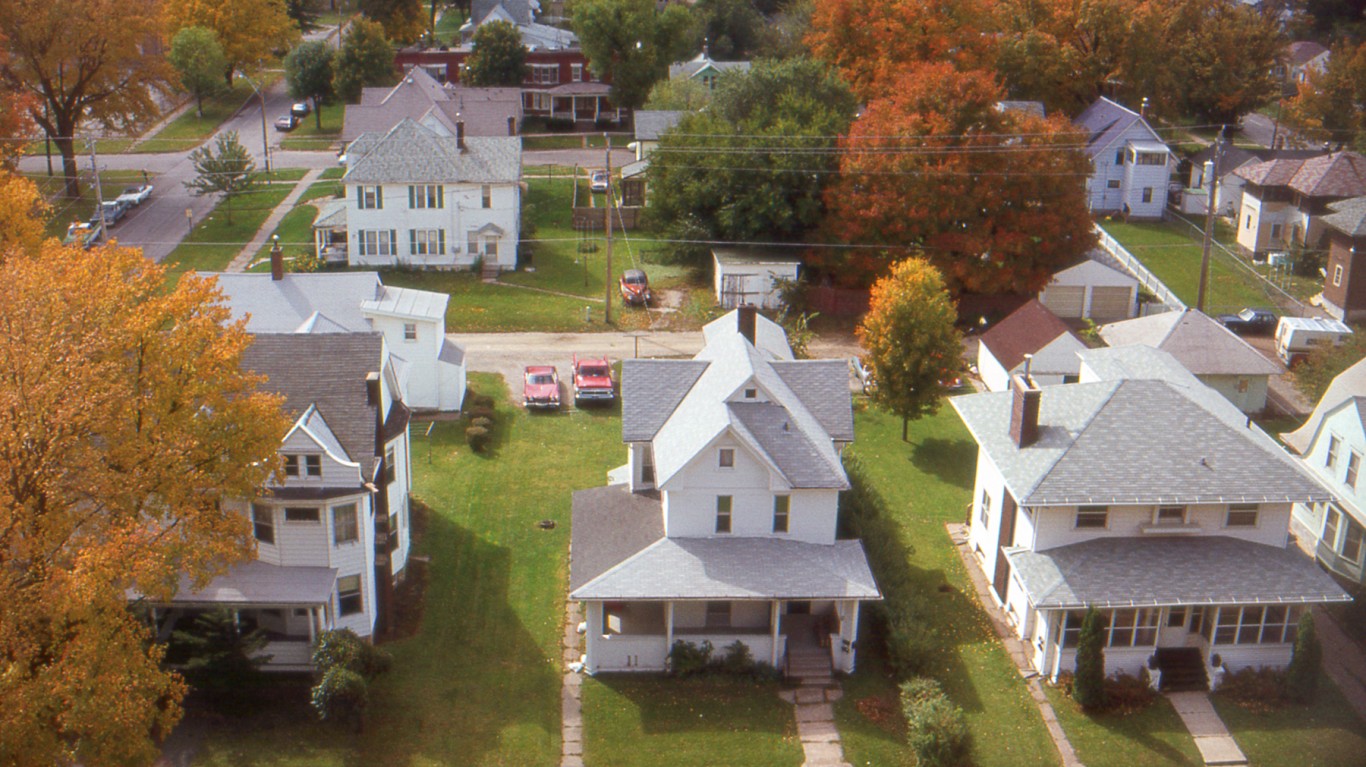
With mortgage rates spiking above 7% for the first time in 20 years, the pandemic-fueled housing boom came to a screeching halt in 2022. The after-effects of easy monetary policy, skyrocketing energy prices, and supply chain issues converged to bring inflation to a boil. In response, the Federal Reserve hiked its target interest rate by more than 4% in a matter of months, putting an end to historically low mortgage rates and sparking a housing affordability crisis that is expected to continue into 2023 and beyond.
But not all markets are created equal, and this year presents an opportunity for mid-tier cities, particularly in the Midwest, to stand out as affordability becomes buyers’ chief concern. According to Lawrence Yun, the National Association of Realtors’ chief economist, “after a big boom over the past two years, there will essentially be no change nationally in home prices in 2023.” Yun expects some over-priced housing markets to deflate while more affordable cities in the Midwest continue to see substantial gains.
Mortgage Rates To Stabilize At New Normal
While experts disagree on exactly where mortgage rates will end up in 2023, they all agree that we won’t see the historic lows set in 2021 any time soon. Yun believes that mortgage rates may have already peaked and expects rates to slowly settle to 5.7% by the end of the year. On the other end of the spectrum, Danielle Hale, chief economist at Realtor.com, predicts average rates will rise in early 2023 to 7.4% before retreating to 7.1% at year-end.
Since the pandemic, low interest rates have made rising home prices palatable for buyers, keeping the monthly mortgage payment down. However, with rates nearly double what they were a year ago, affordability is plummeting. For example, a $400,000 mortgage a year ago at 3% interest would cost about $1,700 per month, whereas that same mortgage today at 6% would set you back $2,400 – a $700 per month difference on the same house.
Home Sales On the Decline
Surging interest rates are affecting not only affordability but also the number of houses available to buy. According to Zillow researchers, “high mortgage rates are not only pushing buyers to the sidelines, they’re tanking new inventory as homeowners decide to hang on to their current houses and low rates.”
Yun agrees with this assessment, predicting a 6.8% decline in home sales in 2023, with at least part of the softening due to homeowners unwilling to trade their sub-3% mortgage for a much higher one and deciding to forego selling. Hale predicts an even steeper drop, with 4.53 million existing home sales, down 14.1% from 2022 and the lowest level since 2012.
Investor demand is also plummeting. A year ago, houses were being flipped for quick money as a rising tide lifted all boats, but uncertainty in the current market has reduced investors’ risk appetite.
House Price Gains to Slow Significantly
While soaring home prices have contributed trillions to Americans’ net worth, it comes at the cost of pushing household budgets to the breaking point. Experts agree that softening home prices provide a much-needed reset to a heated housing market.
The post-pandemic era of double-digit yearly gains in home price appreciation is coming to an end. After 17% growth nationally in 2021 and nearly 10% in 2022, house prices are expected to mediate. “Half of the country may experience small price gains, while the other half may see slight price declines,” noted Yun. For certain affordability-challenged markets such as San Francisco, there is even the possibility of a double-digit decline as rising interest rates put even entry-level housing out of the reach of buyers.
Hale’s analysis of home prices is more optimistic, predicting median home price appreciation of 5.4%, but still well off-pace from the last few years. She attributes slowing growth to the soaring cost of mortgage payments. According to the Realtor.com report, the cost of financing a typical home will average $2,430 in 2023, an extra $500 a month versus 2022, and nearly double the typical payment in 2021.
Affordable Mid-Tier Cities Will Benefit
While the national housing outlook is gloomy, the sun seems to be shining brightly on more affordable mid-tier cities, especially in the Midwest. While major markets in the Sun Belt have dominated the headlines, the focus is already shifting to smaller cities where mortgage costs are still at a healthy sub-30% of total income. “As affordability has become a key driver of both supply and demand in the market, places that still feature reasonable prices… should have the healthiest housing markets in 2023,” proclaimed Zillow’s housing report.
Prices in smaller metro areas, particularly in Midwest states such as Ohio, Pennsylvania, Kansas, and Illinois, have yet to run up to the extremes seen in metros such as New York and San Francisco or Sun Belt leaders such as Phoenix and Dallas. Those with work-from-home jobs or the ability to move to cheaper areas seem to be doing so, with cross-market shopping accounting for over 60% of page views in the third quarter of 2022 according to Realtor.com.
With affordability taking center stage in 2023, Hale predicts a flattening curve as over-priced markets slow and mid-tier cities flourish. She expects above-average price growth in many Midwest markets, such as:
- Cincinnati, Ohio – 6.1%
- Des Moines, Iowa – 6.3%
- Grand Rapids, Michigan – 10.0%
- Indianapolis, Indiana – 7.8%
- Kansas City, Missouri – 7.2%
- Louisville, Kentucky – 8.4%
- Madison, Wisconsin – 9.0%
- Syracuse, New York – 6.1%
- Wichita, Kansas – 7.0%
Rental Market Still Hot, But Relief in Sight
While rising home prices are a double-edged sword for homeowners, they have been a constant negative for renters, as record-low vacancy rates and low inventory have kept rental prices rocketing upward. According to Hale, “year-over-year rent growth slowed to a single-digit pace in the late summer of 2022.” Although vacancy rates are beginning to tick up, she expects rents to continue rising in 2023, up 6.3%, due to excess demand and limited supply, especially as more potential home buyers stay in the rental market as home affordability continues to decline.
However, there may be some relief in sight as more multi-family inventory comes online and vacancy rates begin to rise. Zillow’s research suggests that as home-buyer demand for new construction dries up, builders are increasingly turning toward multi-family construction and build-for-rent homes, which will help ease the supply crunch and eventually stabilize rental rates.
A Year of Moderation?
Since 2020, the U.S. housing market has been on a roller coaster ride, climbing to the highs of frenzied demand and falling interest rates during the pandemic. Then brought to a screeching halt by skyrocketing interest rates thanks to out-of-control inflation. With signs of interest rates and inflation stabilizing, perhaps 2023 will bring a sigh of relief and a return to normalcy for the housing market. Or at least as close to normal as one can expect in today’s world.
This article was produced and syndicated by Wealth of Geeks.
Are You Ahead, or Behind on Retirement? (sponsor)
If you’re one of the over 4 Million Americans set to retire this year, you may want to pay attention.
Finding a financial advisor who puts your interest first can be the difference between a rich retirement and barely getting by, and today it’s easier than ever. SmartAsset’s free tool matches you with up to three fiduciary financial advisors that serve your area in minutes. Each advisor has been carefully vetted, and must act in your best interests. Start your search now.
Don’t waste another minute; get started right here and help your retirement dreams become a retirement reality.
Thank you for reading! Have some feedback for us?
Contact the 24/7 Wall St. editorial team.


